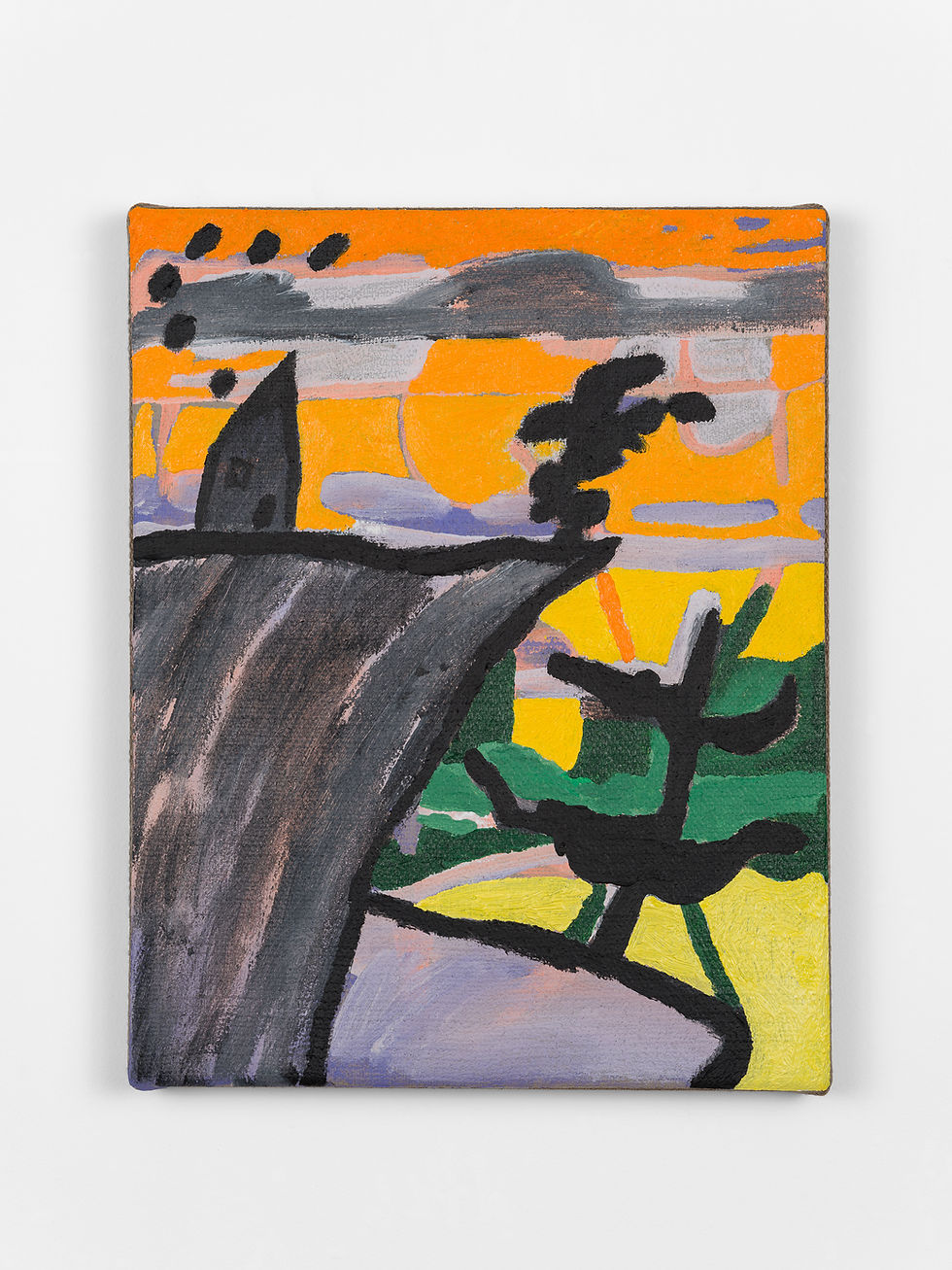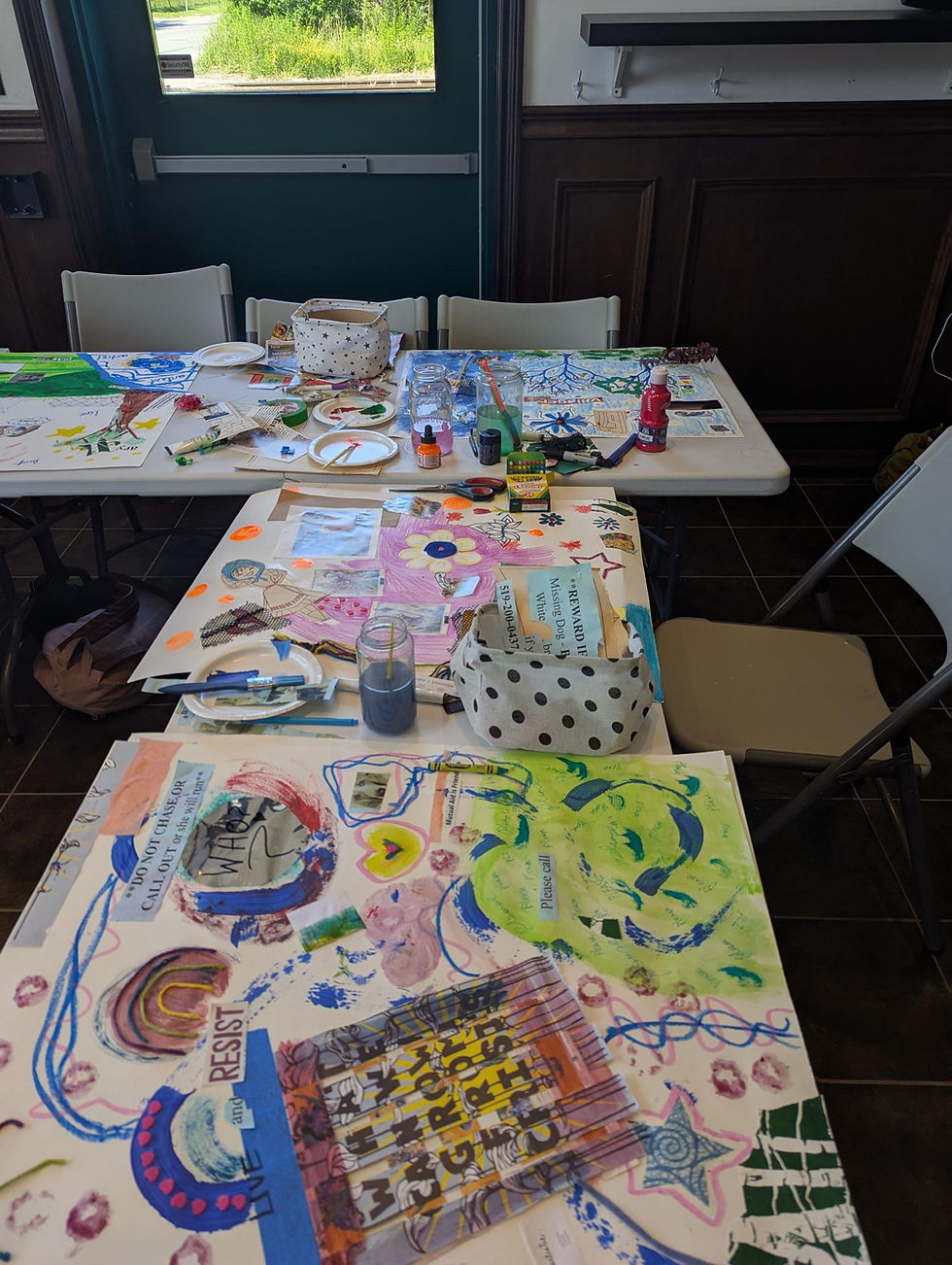Toxic Bodies
- info1509366
- Apr 6, 2023
- 4 min read
Updated: May 30, 2023

Hyperaccumulating at my infusion every 7 weeks (detail)
86 x 52 inches, drawing on watercolour paper
2023
Sarah Mihara Creagen
May 6 - June 3, 2023
Artist's Talk and Closing Reception June 3, 3PM
Please note: Masking is required to visit the gallery. KN95 masks are provided on site.
Artists in the Medical Field: Sarah Mihara Creagen in conversation with Madhini Nirmal and Spence Moore (Virtual discussion)
Wed, May 24, 2023 3:30 PM - 5:00 PM EDT
Excerpted exhibition text by Sarah Mihara Creagen (Full text available here)
1. Infusion Day
It's the week before the opening of Toxic Bodies, and I'm sitting in the infusion clinic, trying to not look at the needle taped to my left arm for the next few hours.
I am having an ongoing long-term relationship with medication delivered through an IV infusion every seven weeks.
I've been thinking a lot about transformations, and this idea of a chimera. In botany, a chimera is a plant or plant part that is a mixture of two or more genetically different types of cells.
I've found the "chimera" existing in many different worlds: botanical, mythological, and medicinal.
I'm on two different biologic drugs right now, both derived from animal DNA (Murinae and Cricetulus griseus families). These drugs, biological medicines, have been created by using living cells or organisms and are essential for disease management.
2. Chimera
I thought I could train myself to breath underwater when I was young, and used to practice taking breaths with a shallow container of water in the bathroom. I wished to be more than human.
I've started thinking about how these more recent biologic drugs have maybe created a hybrid within me. Being mixed-race Japanese, I’ve already explored the dualities of different histories and myths living inside me. The drugs, helping manage Crohn's Disease, have left me feeling constantly remade and broken-apart.
3. Toxins
In my continued relationship with plants, I've been exploring biological remediation, or the bioremediation process. This process is, basically, using a living organism to remove a toxin from the environment. Within the grassroots bioremediation processes that uses plants and fungi (phytoremediation and mycoremediation), the plants and fungi are essentially removing the toxins from the soil by growing in it. The toxins enter the root system and remain contained there. The plants that grow in toxic soil and accumulate chemicals are then disposed of as toxic entities themselves.
In cities or areas where there's a history of industry, it's not uncommon for chemicals and heavy metals to find their way into the soil. Living in one of these cities, and working on a public bioremediation garden project in another, I’m exploring modes of grassroots bioremediation, and starting to learn about which plants are the most efficient for different metals. This process seems to speak to a bodily relationship to chronic illness and medication, to illness and recovery. How are these toxins acting and impacting the environment/body?
4.Hyperaccumulators
I've been reading in particular about plant interaction with Uranium and Cesium, Oyster Mushrooms, Brown Mustard, Tall Fescue, Sunflowers ... Where these plants grow, their deep, fast growing roots, bulky plant mass, and (for the Oyster Mushrooms) mycelium help remove these toxins from their environments. Sunflowers in particular are hyperaccumulators for heavy metals and toxins.
I'm a 1.5 or maybe 2nd gen, mixed-race Japanese. My Bachan, grandmother, was born outside of Hiroshima and lived there through WW2 and the atomic bombs. The stories we've been left with about the aftermath and her helping with recovery response are understandably sparse. These plants could never fully remove the contaminants from atomic bombs on their own, but sunflowers have amazing properties as hyperaccumulators, to remove huge amounts of radionuclides cesium 137 and strontium 90 from the soil when grown near disaster sites.
5. More than
Spending time growing these plants and mushrooms in my home this winter has left space to imagine these worlds and stories collapsing in on each other: stories of illness, humour, chimeric transformations, and movement from human to more than human.
- Sarah Mihara Creagen, May 2023
Forest City Gallery is pleased to announce Toxic Bodies, a solo exhibition of new work by artist Sarah Mihara Creagen.
Sarah's new body of work explores plants used in bioremediation processes (working with living organisms to heal or restore contaminated environments). She considers this bioremediation activity through personal experiences of her mixed-race Japanese Canadian background, queerness, chronic illness and disability while living with Crohn’s Disease.
The artist gratefully acknowledges support from the Canada Council for the Arts, the Ontario Arts Council, and the Toronto Arts Council.
Sarah Mihara Creagen is a Queer, mixed-race Japanese Canadian artist currently based in Toronto, exploring intersections of botany, queerness, and chronic illness. She received her MFA in 2018 from Hunter College in New York City, and was a 2018/2019 Queer|Art Mentorship Fellow. She has had solo exhibitions at Katharine Mulherin’s NO FOUNDATION gallery (Toronto), SPRING/BREAK Art Show and Hercules Studios Gallery in New York City, as well as Articule (Montreal) and The Khyber (Halifax). Her work has been featured in The NY Times “What to See in New York Art Galleries Right Now”, Hyperallergic, and Visual Arts News.
Currently, Sarah is collaborating with Zoe Hayes (a queer gardener, librarian and herbalist) and the City of Hamilton to create an active public bioremediation garden through 2023/2024 on an unused city lot in Hamilton, ON.
Land Acknowledgment
Forest City Gallery will be presenting Sarah Mihara Creagen's work on the unceded and unsurrendered territories of the Anishinaabeg, Haudenosaunee, Lenape, Huron-Wendat and Attawandaron peoples.
Here, everyone has obligations, rights, and terms of co-existing and living together according to the London Township and Sombra Treaties of 1796 and the Dish With One Spoon wampum agreement.
The artist is currently based in Tkarón:to, the traditional territories of the Mississaugas of the Credit First Nation, the Haudenosaunee, the Anishinaabe and the Huron-Wendat. Tkarón:to is part of Treaty 13 and The Dish With One Spoon covenant.



